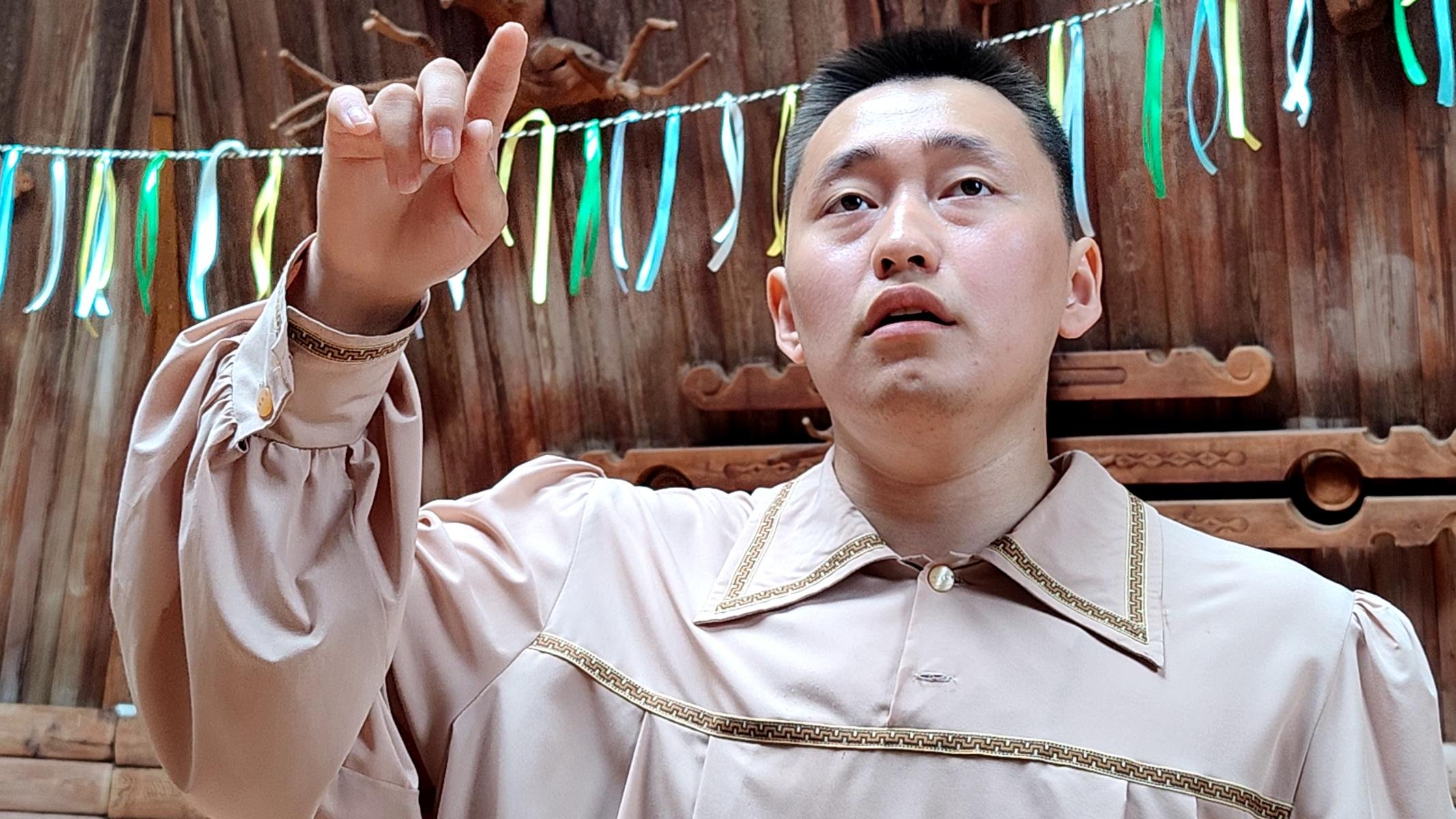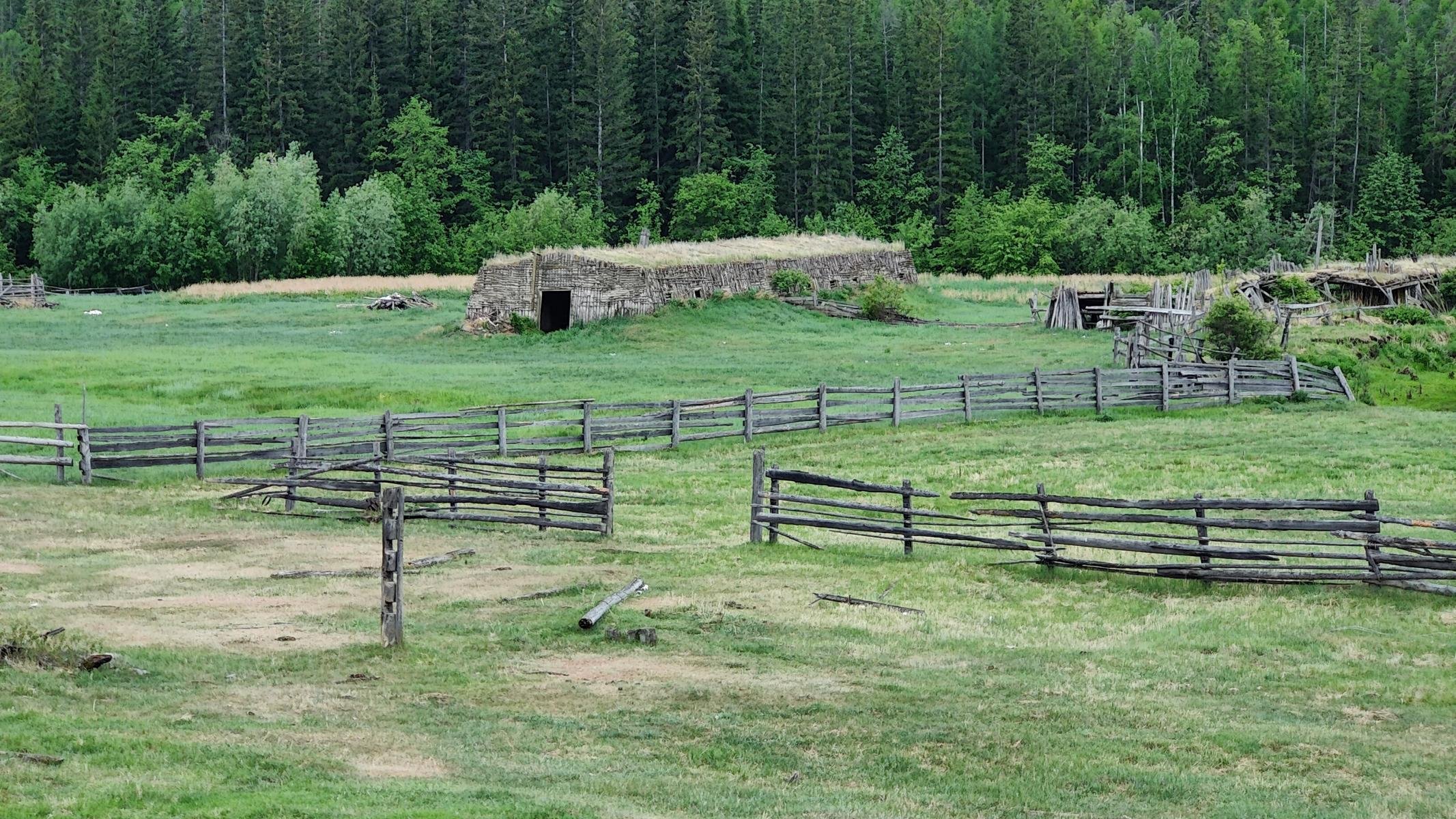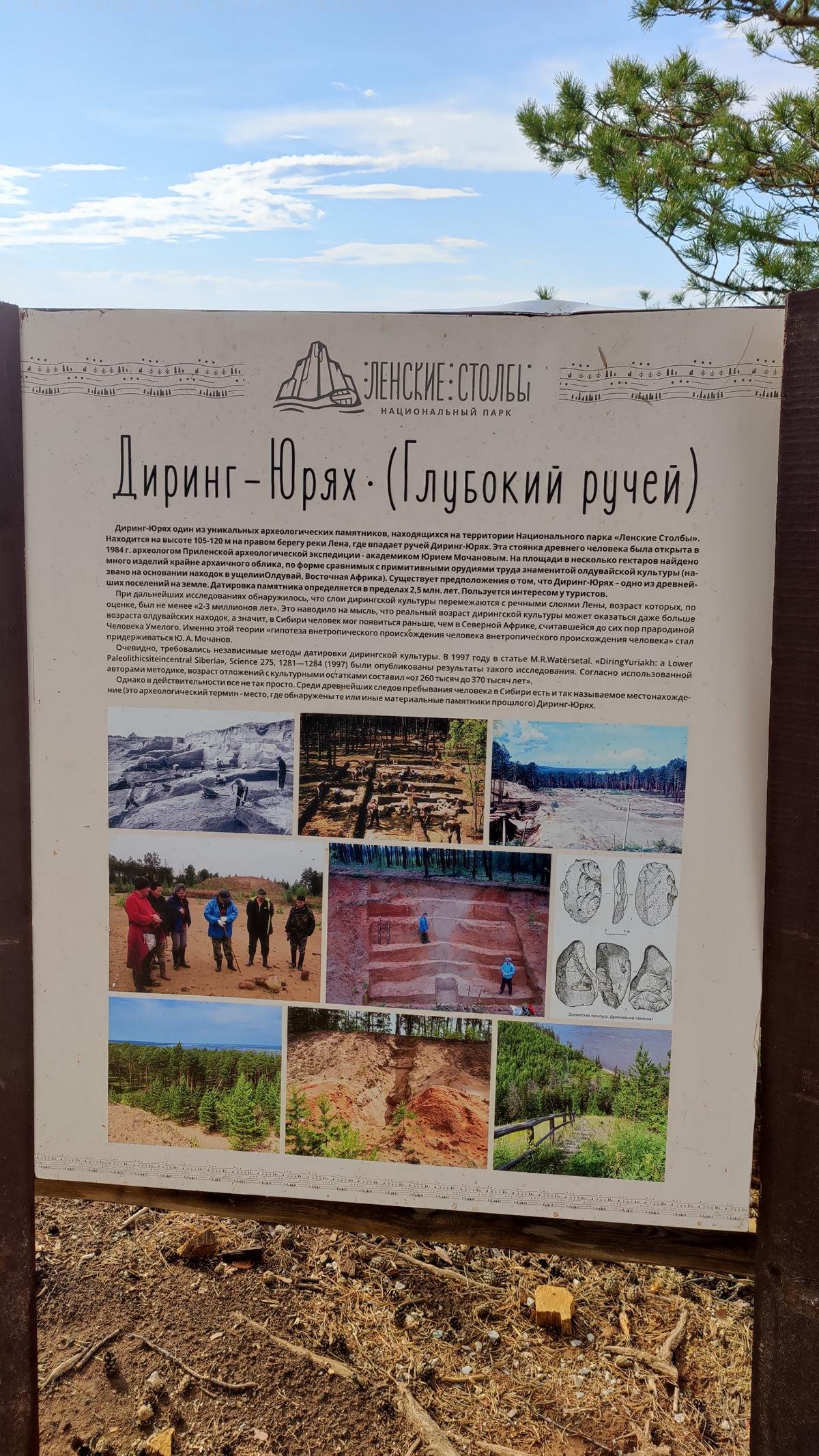Yakutia (Sakha) - the Coldest Region on Earth - June 2024
Jakutien (Sacha) – die kälteste Region der Erde – Juni 2024
ENGLISH: In mid-June, we flew to Yakutia (official name: Republic of Sakha) in north-eastern Siberia for a week. At 3,083,523 km² / 1,190,555 sq mi, this Russian republic is roughly the size of India, but has just under one million inhabitants. 40% of the territory lies north of the Arctic Circle. Yakutia/Sakha has an extremely continental climate and is considered the coldest region in the northern hemisphere. In winter, temperatures in the capital Yakutsk (pop. 270,000) can drop to minus 60 degrees C / minus 76 degree F, while in summer they can rise to 35 degrees C / 90 degree F. When we traveled to Yakutia in June, it was already quite warm. Most of the area consists of taiga (almost impenetrable birch or coniferous forest), which gives way to tundra (sub-polar, treeless landscape covered with moss, lichen and small shrubs) further north.
The Republic of Yakutia / Sakha is particularly rich in natural resources, e.g. gold, diamonds and crude oil/gas. Unfortunately, photography was forbidden in the treasury of the city of Yakutsk, where extensive treasures and art objects made of gold and diamonds are exhibited.
DEUTSCH: Mitte Juni flogen wir für eine Woche nach Jakutien (offizieller Name: Republik Sacha) im Nord-Osten Sibiriens. Diese russische Teilrepublik ist mit 3.083.523 km² etwa so groß wie Indien, hat aber nur knapp eine Million Einwohner*innen. 40 % des Territoriums liegen nördlich des Polarkreises. Jakutien/Sacha hat ein extrem kontinentales Klima und gilt als die kälteste Region der nördlichen Hemisphäre. Im Winter können die Temperaturen in der Hauptstadt Jakutsk (270.000 Einw.) auf bis zu minus 60 Grad sinken, während sie im Sommer auf bis zu 35 Grad steigen. Als wir im Juni nach Jakutien reisten, war es schon ziemlich warm. Der Großteil des Gebiets besteht aus Taiga (fast undurchdringlicher Birken- oder Nadelwald), die weiter im Norden in die Tundra übergeht (sub-polare, baumfreie Landschaft, die mit Moos, Flechten und kleinen Sträuchern bedeckt ist).
Die Republik Jakutien / Sacha ist besonders reich an Rohstoffen, z.B. Gold, Diamanten und Rohöl/Gas. Es war leider in der Schatzkammer der Stadt Jakutsk, in der umfangreiche Kostbarkeiten und Kunstgegenstände aus Gold und Diamanten ausgestellt sind, das Photographien verboten.
The entire territory of Yakutia is permafrost/permanently frozen soil, which only thaws on the surface in summer. The ground can be frozen to a depth of several hundred meters. The buildings, roads and pipes thaw the permafrost and therefore slowly sink into the ground. To prevent this, the houses are placed on concrete pilings up to 10 meters deep into the ground and there is a cavity of up to one meter between the base plate of the house and the ground. All pipes (district heating, water, sewerage, gas) are laid above ground for this reason. This gives Yakutsk, the coldest capital in the world, a very unique cityscape. Man-made climate change can also be felt here and is particularly noticeable in Yakutsk with rising summer temperatures.
Das gesamte Territorium Jakutiens ist Permafrost-/Dauerfrostboden, der im Sommer nur an der Oberfläche auftaut. Der Boden kann bis zu einer Tiefe von mehreren hundert Metern gefroren sein. Die Gebäude, Straßen und Leitungsrohre tauen den Permafrostboden auf und sinken daher langsam in den Boden. Um dies zu verhindern werden die Häuser auf bis zu 10 Meter tief in den Boden reichende Betonstelzen gestellt und zwischen der Bodenplatte des Hauses und der Erde ist ein Hohlraum von bis zu einem Meter. Alle Leitungen (Fernwärme, Wasser, Kanalisation, Gas) sind daher oberirdischen verlegt. Dies verleiht Jakutsk, der kältesten Hauptstadt der Welt, eine ganz eigenes Stadtbild. Der menschengemachte Klimawandel ist auch hier fühlbar und macht sich in Jakutsk vor allem in steigenden Sommer-Temperaturen bemerkbar.
The Kingdom of Permafrost consists of several tunnels carved into a mountain, in which ice sculptures are exhibited. The motifs are partly taken from Yakut mythology and partly from modern film series (e.g. Game of Thrones). The approximately one-hour tour ends at an ice bar, where we were able to drink vodka or herbal schnapps (called "balsam") from a cup made of pure ice. We also ate frozen fish, the Yakuts' favorite dish. It is minus 7 degrees C / 19 degrees F in the tunnels and warm clothing is provided by the tunnel operator.
Das Kingdom of Permafrost besteht aus mehreren in einen Berg geschlagen Stollen, in denen Eisskulpturen ausgestellt sind. Die Motive entstammen zum Teil der jakutischen Mythologie und zum Teil modernen Filmserien (z.B. Game of Thrones). Der etwa einstündige Rundgang endet an einer Eisbar, wo wir aus einem Becher aus purem Eis Wodka oder Kräuterschnaps (genannt „Balsam“) trinken konnten. Dazu aßen wir gefrorenen Fisch, die Lieblingsspeise der Jakuten. In den Stollen hat es minus 7 Grad C und warme Kleidung wird vom Stollen-Betreiber bereitgestellt.
The Yakuts (also known as Urangai Sakha) are a Turkic people who migrated to this region in the Middle Ages and subjugated the indigenous population. Russian settlers then conquered the region in the 17th century. It is reported that during this phase, up to 70 % of the Sakha died as a result of the fighting or diseases that were brought in. Today, more than half of the population is Sakha again. Of all the ethnic groups in Russia, the Sakha are considered the least Russified. The regional museum exhibits traditional Yakut costumes and vessels made from birch bark. In the Yakut Cultural Center we learned more about the ritual dances and songs of the Yakuts. The Ohuokhai dance is part of a sun cult and is danced especially at the beginning of the Yakut New Year (June 21). Concentric circles are formed which rotate against each other. An employee of the cultural center sang some traditional songs for us. Shamanism has been more strongly preserved in Yakutia than in other parts of Siberia. A Yakutian interlocutor told us: "Whether Russian Orthodox, Muslim or Buddhist, when it comes to questions about the future or family matters, a person from Yakutia always asks a shaman for advice first".
Die Jakuten (auch Urangai Sacha genannt) sind ein Turkvolk, das im Mittelalter in diese Region einwanderte und die Urbevölkerung unterwarf. Im 17. Jh. eroberten russische Siedler die Region. Es wird berichtet, dass während dieser Phase bis zu 70 % der Sacha durch die Kämpfe bzw. eingeschleppte Krankheiten umkamen. Heute sind wieder mehr als die Hälfte der Bevölkerung Sacha. Von allen ethnischen Gruppen Russlands gelten sie als am wenigsten russifiziert. Im Regionalmuseum sind traditionelle jakutische Trachten und aus Birkenrinde hergestellte Gefäße ausgestellt. Im jakutischen Kulturzentrum erfuhren wir mehr über die rituellen Tänze und Gesänge der Jakuten. Der Ohuokhai Tanz ist Teil eines Sonnenkults und wird insbesondere zu Beginn des jakutischen Neujahrs (21. Juni) getanzt. Dabei werden konzentrische Kreise gebildet, die sich gegeneinander drehen. Ein Mitarbeiter des Kulturzentrums sang uns einige traditionelle Lieder vor. In Jakutien hat sich der Schamanismus stärker erhalten als in anderen Teilen Sibiriens. Ein jakutischer Gesprächspartner erzählte uns: „Egal ob Russisch-Orthodox, Muslim oder Buddhist, wenn es um Fragen der Zukunft oder um Familienangelegenheiten geht, dann fragt eine Person aus Jakutien immer zuerst einen Schamanen oder eine Schamanin um Rat“.
The Jaw harp / Jew´s harp (called Khomus / Xomys in Yakut) is the traditional musical instrument of the Yakuts. The Jaw harp museum in Yakutsk is correspondingly extensive. We were surprised and delighted to find a separate display case in the exhibition about the municipality of Molln, Upper Austria. Molln, the center of Austrian Jaw harp production, is only 20 km away from where we live. The Austrian Franz Kumpl, who lives not far from us, is president of the International Jew´s Harp Society. We were even more surprised when we saw a photo in the museum of an Austrian Jaw harp player, Manfred Rußmann (last photo), who played at Ursula´s and Wolfgang's (1945-2014) wedding in 2001. Such a small world!
Ursula and I have now bought two jaw harps and want to learn to play the jaw harp next year. Maybe there will be a house concert soon.
Die Maultrommel (auf jakutisch Chomus / Xomys genannt) ist das traditionelle Musik Instrument der Jakuten. Dementsprechend umfangreich ist das Maultrommel-Museum in Jakutsk. Wir waren überrascht und erfreut, in der Ausstellung eine eigene Vitrine über die Gemeinde Molln / OÖ. zu finden. Molln, das Zentrum der österreichischen Maultrommelproduktion, liegt nur 20 km entfernt von wo wir wohnen. Der Österreicher Franz Kumpl, der nicht unweit von uns wohnt, ist Präsident der Internationalen Maultrommel Gesellschaft. Wir waren dann noch mehr überrascht, als wir im Museum ein Foto von einem österreichischen Maultrommel-Spieler, Manfred Rußmann (letztes Foto), sahen, der bei Ursulas und Wolfgangs (1945-2014) Hochzeit im Jahr 2001 aufgespielt hat. So klein ist die Welt!
Ursula und ich haben jetzt zwei Maultrommeln erworben und wollen das nächstes Jahr das Maultrommelspielen erlernen. Vielleicht gibt es bald einmal ein Hauskonzert.
Yakutia / Sakha is drained by one of the largest rivers in the world. The Lena River rises near Lake Baikal and flows into the Arctic Ocean after 4,294 km / 2,668 mi. About 180 km / 110 mi upstream from Yakutsk there are striking rock formations called the Lena Pillars. We spent a few days there and took part in a classical music festival. To get there, we first had to take a cab 160 km / 100 mi through largely uninhabited countryside to the village of Tit Ary. The pipes of the local district heating plant are also laid above ground in this village. We saw that some of the old wooden houses had sunk into the permafrost almost up to the windows.
Jakutien / Sacha wird von einem der größten Ströme der Welt entwässert. Der Fluss Lena entspringt nahe dem Baikal See und mündet nach 4.294 km (2,668 mi) in den Arktischen Ozean. Etwa 180 km stromaufwärts von Jakutsk befinden sich markante Felsformationen, die Lena Säulen genannt werden. Dort haben wir einige Tag verbracht und an einem Klassik-Festival teilgenommen. Um dort hinzukommen mussten wir zuerst mit dem Taxi 160 km durch weitgehend unbesiedeltes Land bis zur Ortschaft Tit Ary fahren. Auch in dieser Ortschaft sind die Leitungen des örtlichen Fernheizwerks oberirdisch verlegt. Bei manchen alten Holzhäusern sahen wir, dass sie schon fast bis zu den Fenstern in den Permafrostboden eingesunken sind.
In Tit Ary, we boarded a boat to travel an hour upstream to the Lenskie Stolbi lodge. To our delight, a shaman got on board in one of the villages.
On the other bank of the Lena, which is already 4 km wide at this point, are the Lena Pillars (Ленские столбы). This up to 300 m / 890 ft high limestone cliff, which is a UNESCO World Heritage Site, lines the south bank of the river for 80 km. Wind and water erosion has carved a multitude of pillars out of the rock.
In Tit Ary bestiegen wir ein Boot, um eine Stunde stromaufwärts zur Lodge Lenskie Stolbi zu fahren. In einer der Ortschaften stieg zu unserer Freude eine Schamanin zu.
Am anderen Ufer der Lena, die an dieser Stelle schon 4 km breit ist, befinden sich die Lena Säulen (Ленские столбы). Diese bis zu 300 m / 890 ft hohe Felswand aus Kalkstein, die zum UNESCO Weltnatur Erbe zählt, säumt am Südufer auf einer Länge von 80 km den Fluss. Wind- und Wasser Erosion hat eine Vielzahl von Säulen aus dem Gestein herausgeschnitten.
After the strenuous days of traveling, we treated ourselves to some luxury at the Lenskie Stolbi Lodge https://lenapillarscamp.com/eng . We enjoyed the glass front with a view of the Lena Pillars. There were still some thick ice floes on the shore in mid-June. The Lena is frozen over from October to May and can be navigated by car during this time.
Nach den anstrengenden Reisetagen gönnten wir uns etwas Luxus in der Lenskie Stolbi Lodge https://lenapillarscamp.com/eng . Wir genossen die Glasfront mit Ausblick auf die Lena Säulen. Am Ufer lagen Mitte Juni noch immer einige dicke Eisschollen. Die Lena ist von Oktober bis Mai zugefroren und kann während dieser Zeit mit Autos befahren werden.
One of the reasons why we had chosen the lodge was that a classical music festival was taking place at the weekend, which we had found via Instagram. The concert opened with a ceremony by the shaman, who gave her blessing to everyone present. The musicians and singers, all members of the Yakutsk State Orchestra, performed Russian and European classical music, as well as English musicals. Against the impressive backdrop of the Lena Columns, the musicians and singers gave an excellent performance. The hundreds of thousands of mosquitoes posed a particular challenge (June/July is peak mosquito season in Yakutia). After Ursula experienced an allergic reaction following a series of bites, we decided to put on insect repellent jackets - probably unusual clothing for a classical concert. With our clothes we attracted a lot of attention. The organizers tried to keep the insects away from the artists with smoke pots. However, most of the local audience seemed to be fine with the insects. As one spectator simply told us: "We're used to the mosquitoes".
Einer der Gründe warum wir die Lodge gewählt hatten war, dass zum Wochenende ein Klassik Festival stattfand, welches wir über Instagram gefunden hatten. Das Konzert wurde mit einer Zeremonie der Schamanin eröffnet, die allen Anwesenden ihren Segen gab. Die Musiker und Sängerinnen, alles Mitglieder des staatlichen Orchesters von Jakutsk, spielten russische und europäische klassische Musik, sowie englischen Musicals. Vor der beeindruckenden Kulisse der Lena Säulen boten die Musikerinnen und Sänger eine ausgezeichnete Aufführung. Eine besondere Herausforderung waren die hundert-tausenden Stechmücken (Juni/Juli haben in Jakutien die Mücken Hochsaison). Nachdem Ursula nach einer Reihe von Stichen eine allergische Reaktion verspürte, entschlossen wir uns, die Insektenschutz Jacken anzuziehen – für ein klassisches Konzert wohl eine ungewöhnliche Kleidung. Wir sind damit sehr aufgefallen. Die Veranstalter versuchten mit Rauchtöpfen die Insekten von dne Künstler*innen fernzuhalten. Die meisten einheimischen Zuschauer*innen schienen mit den Insekten allerdings klarzukommen. Wie uns eine Zuschauerin sagte: „Wir sind die Stechmücken gewöhnt“.
The next day, we took a motorboat across the 4 km wide Lena River to the Lena Pillars. Two cruise ships were anchored there, having brought visitors from Yakutsk, 180 km away, over the weekend. Excavations show that the Lena rocks were inhabited several millennia ago. Even today, Yakut shamans still revere these rocks as a sacred place and a place of power. The ascent to the rocks takes about an hour and is rewarded with a magnificent view.
Am nächsten Tag fuhren wir mit einem Motorboot über die 4 km breite Lena zu den Lena Säulen. Dort ankerten gerade zwei Kreuzschiffe, die über das Wochenende Besucher*innen aus dem 180 km entfernten Jakutsk heraufgebracht hatten. Die Lena-Felsen sind – wie Ausgrabungen zeigen – vor mehreren Jahrtausenden besiedelt gewesen. Auch heute noch verehren die jakutischen Schaman*innen diese Felsen als heiligen Ort und Kraftplatz. Der Aufstieg zu den Felsen dauert etwa eine Stunde und wird mit einer grandiosen Aussicht belohnt.


























































































































































